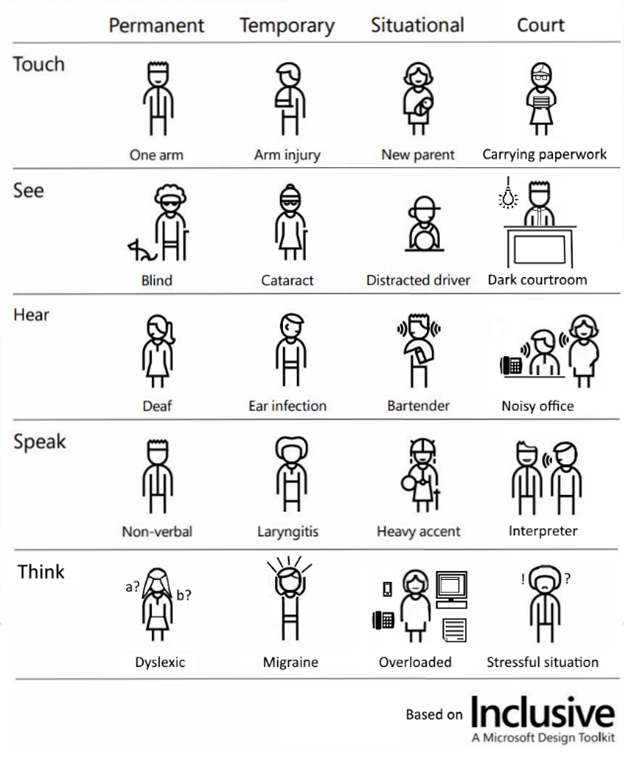Inclusive design and accessibility go hand in hand, and their principles are at the forefront of the design trends in 2022. Web accessibility ensures a digital service is usable for as many users as possible, particularly those with disabilities and accessibility needs. It is also important to address the segments of the population who do not have a particular disability but still may have problems interacting with interfaces based on various situations in their environment. In this blog, we will discuss about the inclusive design that deliberately addresses this diversity.
Inclusivity is not that new
Many companies started considering how to improve their products, and one of the most recognizable features that touch on inclusivity is emojis. They have also added featured imagery with disabilities and minority groups to their platforms, such as emojis with different types of skin tones or combining different activities with wheelchairs. These are the first steps to make users identify themselves more easily and find the experience more enjoyable.
Moreover, they shifted attitudes towards gender and cultural inclusion (like non-English naming conventions) and reflected them into online forms with non-binary options and custom fields, providing users with a more personalized experience.
But inclusivity does not touch only a cultural aspect
Page load speed is one of the best examples of inclusive design. We are used to fast networks that allow devices to load large media files in no time. But in many places worldwide, even in the US, high-speed internet is not available. So, it is important to consider whether users in different areas can have a similar experience throughout when choosing HD features.

So how to start a journey with inclusive design?
At the beginning of development, we always think about the usability of our product. Usability can be described as the ease with which a regular person can accomplish a given task with the product. It is a simple concept yet so important that it can mess up and destroy even the most amazing product concepts if not implemented well.
If we are more serious and want to expand our target group, the next step would be to include accessibility in the development process. We need to do everything to make our product equally usable and enjoyable to people regardless of their abilities or what assistive devices they use. With this, we are halfway to inclusion.
Also, many features may look like they have been designed only for people with disabilities, but in the end, almost all of us use them. Imagine watching movies in a noisy place, for example, in a cafe. It is stressful and annoying. So, you may use your headphones, but what if you do not have them? The Close Captions (CC) will help you, which also helps people with temporary or permanent hearing impairments. The other case will be when you are outside on a very sunny day, and you need to increase the screen’s contrast to see anything on it. The same feature also benefits people with vision loss.
The inclusive design should physically, cognitively, and emotionally satisfy all minorities and majorities within the target group. By recognizing all exclusions, learning from diversities, and solving the existing problems by improving the solutions, we can offer products that are accessible to as many people worldwide as possible.

Summing up, it is worth bearing in mind that inclusive design should not be an additional option but should be a part of the product design process from scratch, bringing immense value in the long run. However, being aware of people’s needs and taking accessibility and inclusion into account is still a huge step towards future UX design and businesses have a long way to go to achieve them.
